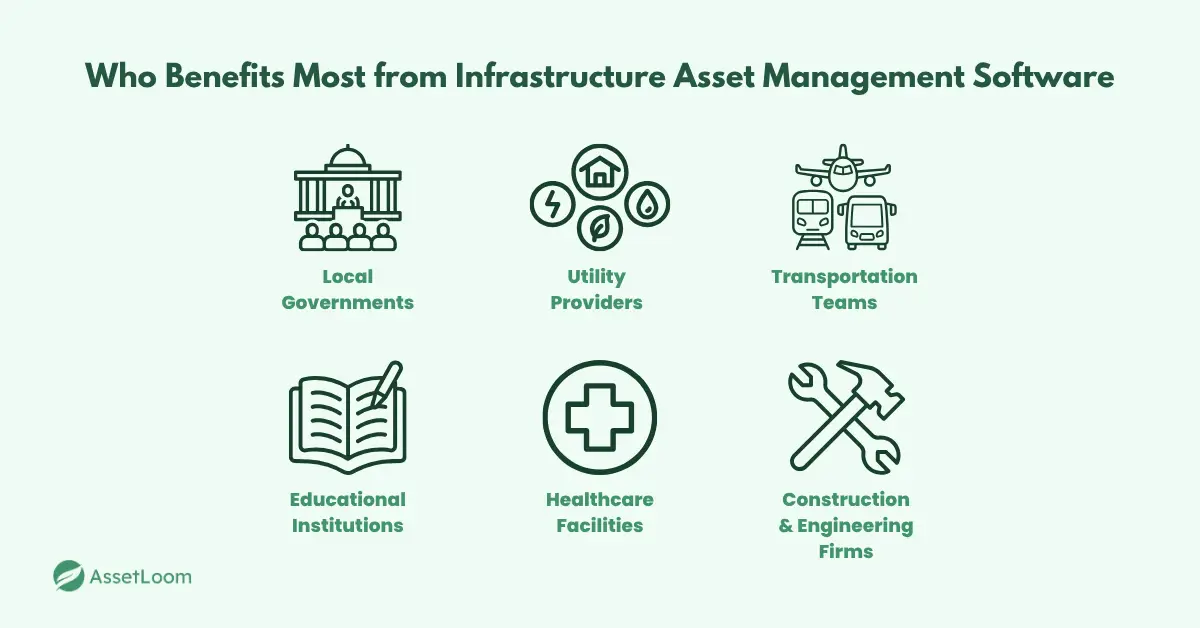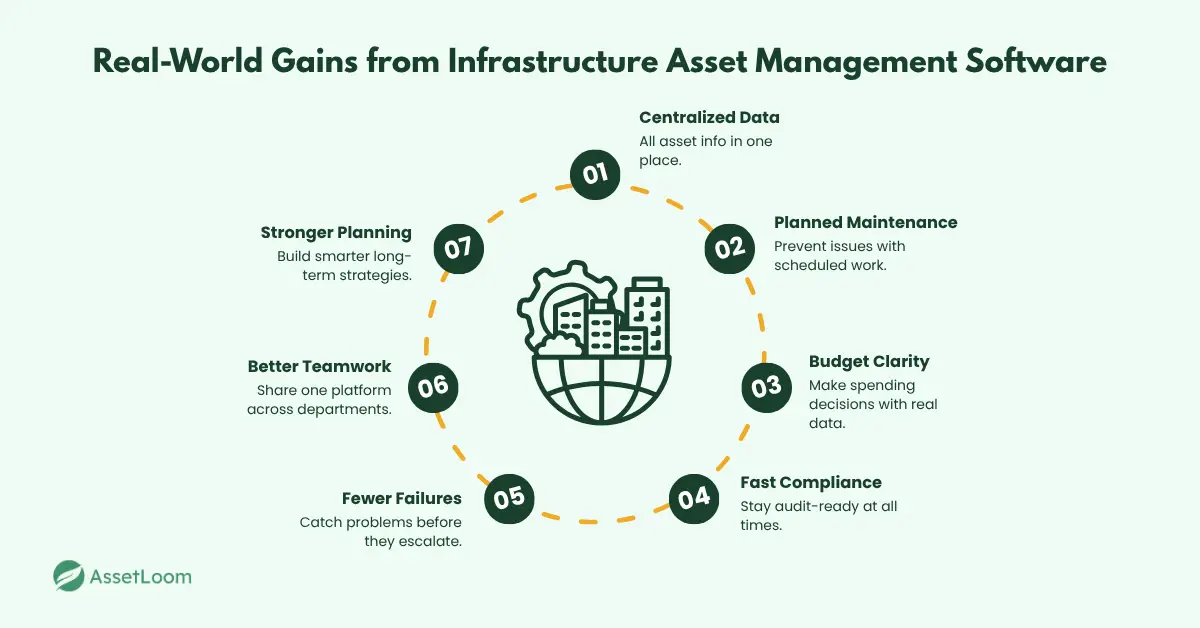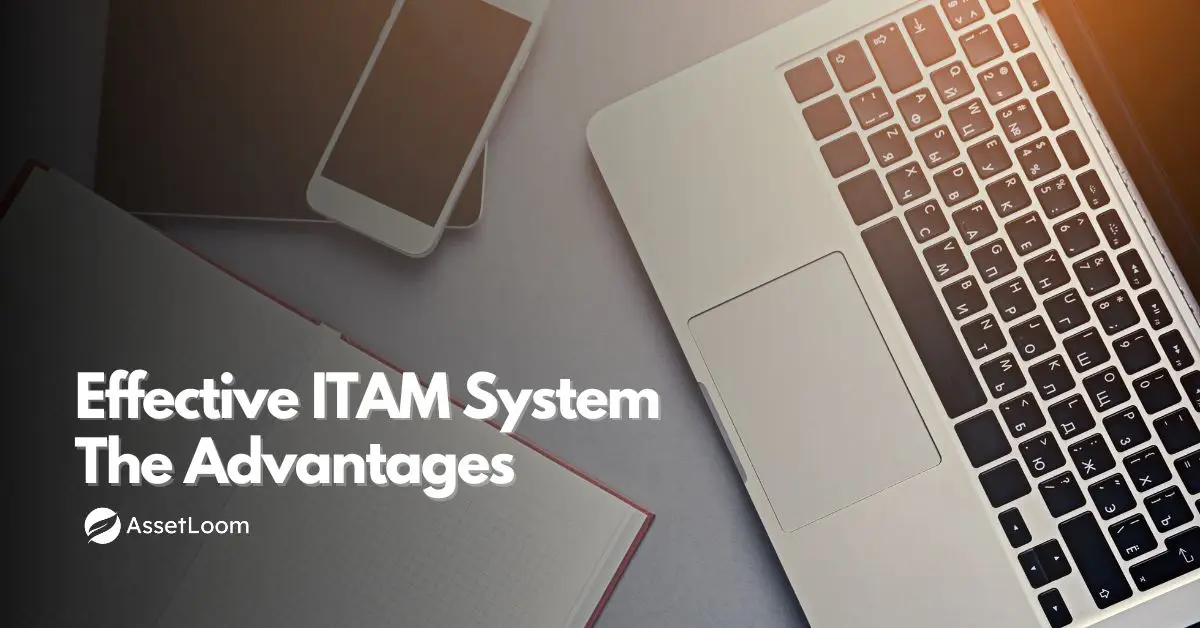Who Needs Infrastructure Asset Management Software?
Discover who benefits most from infrastructure asset management software and how it helps cut costs and improve maintenance.
Managing infrastructure assets isn’t easy. Teams are often stretched thin trying to keep everything running smoothly while staying on top of budgets and regulations. But when your asset information is scattered across spreadsheets or different systems, it’s hard to get a clear picture of what needs attention. That means problems sneak up on you, repairs cost more than expected, and planning becomes a guessing game.
Most of the time, the real challenge is not the work itself. It is the lack of the right tools to understand what is happening before problems occur.
Infrastructure asset management software can change that. It shares some similarities with IT Asset Management (ITAM), but it’s built specifically for physical infrastructure and public assets. And it’s not for every organization. In this article, we’ll look at the types of teams and industries that get the most value from this kind of software and why it might be time to consider making a change.
Signs You Might Need Infrastructure Asset Management Software
Many organizations don’t realize they need better tools until problems become obvious. Here are common signs that your current methods may no longer be enough:
- Asset data is scattered across multiple spreadsheets or systems, making it hard to get a complete picture.
- Maintenance is mostly reactive, with frequent breakdowns and costly emergency repairs.
- Budget planning is difficult because you lack accurate information about asset conditions and replacement timelines.
- Compliance and reporting take too much time and cause stress due to missing or incomplete records.
- Teams spend excessive time on manual data entry and coordination instead of proactive management.
If any of these sound familiar, it might be time to consider infrastructure asset management software. The right system can bring your data together, improve visibility, and help your team work more efficiently.
Who Benefits Most from Infrastructure Asset Management Software
Not every organization needs infrastructure asset management software, but for teams handling a large number of physical assets, it’s often the missing piece. As assets age, budgets tighten, and expectations grow, relying on spreadsheets or siloed tools starts to hold teams back. Below are the types of organizations that benefit most, and why a better system makes such a difference in their day-to-day work.
Local Governments and Municipalities
City departments manage everything from roads and bridges to streetlights, buildings, water systems, and even playground equipment. With limited staff and budget, keeping track of it all is a challenge. Often, maintenance is reactive. Teams respond to complaints, not conditions.
Infrastructure asset management software gives municipalities a central place to store asset records, track service history, and plan future projects. For example, instead of waiting for a road to deteriorate past the point of repair, cities can rank road conditions and schedule resurfacing before damage becomes more expensive. The software also helps when it comes to accountability. Councils and grant providers want to see where funds are going — detailed reports make that easy.
And when staff turnover happens, which is common in public works, the knowledge doesn’t walk out the door. Everything is documented and accessible for the next person.
Utility Providers (Water, Power, Gas)
For utility companies, equipment failures can quickly escalate. A single outage or pipe burst can affect thousands of customers. Yet, many utilities still track critical assets like transformers, pumps, and underground infrastructure using basic spreadsheets or separate systems that don’t communicate.
Asset management software allows utility teams to see the full picture. They can log inspections, schedule maintenance, and predict failures based on usage patterns or asset age. A water utility, for instance, might spot early warning signs in leak reports or pressure drops and plan a replacement before a main breaks. For power providers, it becomes easier to stay ahead of vegetation management, pole inspections, and transformer upgrades — especially in high-risk areas.
These systems also simplify regulatory compliance. When a report is due, teams can pull complete maintenance histories and inspection logs without digging through folders or emails.
Transportation and Public Works
Transportation departments deal with some of the most asset-intensive environments. Road networks, bridges, signals, signs, and drainage systems all require constant oversight. Maintenance decisions often come down to which problem is most visible or urgent, which can lead to short-term fixes rather than long-term planning.
With infrastructure asset management software, teams can track condition scores, maintenance cycles, and service requests in one place. This helps prioritize work based on actual need, not just public complaints. A county road team, for example, can use the software to compare road segments and focus its efforts on areas where deterioration is occurring most rapidly.
Some systems also integrate with GIS (Geographic Information System), which allows managers to view assets on a map and coordinate crews based on location. That’s a big time-saver, especially in rural or multi-district operations.
Educational Institutions
Schools, colleges, and universities often face infrastructure issues that build up quietly over time. Older buildings, aging mechanical systems, and growing student populations all put pressure on facilities teams. Without a structured system, maintenance becomes reactive, and budgets get stretched.
With asset management software, teams can plan work more effectively across multiple campuses. For example, an operations director can see which HVAC units are nearing the end of life, schedule inspections before peak seasons, and plan capital requests based on actual data.
It also helps avoid service disruptions. Instead of discovering a problem when students are already in the building, teams can stay ahead of repairs during school breaks. Over time, this shifts the organization from firefighting mode into proactive planning.
Healthcare Facilities
Hospitals and clinics rely on well-functioning infrastructure to keep patients safe and operations smooth. A failure in a backup power system or air handling unit doesn’t just cause discomfort — it can delay procedures or even put lives at risk.
Facilities teams in healthcare environments use asset management software to track everything from generators and HVAC systems to life-safety inspections and elevator servicing. It helps ensure that no task is missed and that all maintenance is documented. This becomes especially important during compliance audits or accreditation visits, where incomplete records can lead to penalties or lost certifications.
It also improves internal coordination. When clinical engineering, facilities, and IT all use the same platform, they can avoid duplicated effort and resolve issues faster.
Read also: How Healthcare Teams Benefit from a Cloud-Based Asset Management System
Construction and Engineering Firms
Construction and engineering firms rely heavily on tools, vehicles, and equipment that move from site to site. But without a good system, it’s easy to lose track of where assets are, whether they’re in working condition, or if they’re even being used.
Infrastructure asset management software gives project managers and field supervisors real-time visibility into what’s available and where. Instead of renting a piece of equipment you already own — or losing hours hunting something down — you can make quick, informed decisions.
The software also tracks usage and maintenance, helping teams plan servicing between jobs and extend the life of expensive assets. And by keeping detailed records of asset movement, firms reduce loss, avoid downtime, and create better accountability across crews.

What Organizations Gain from Infrastructure Asset Management Software
When infrastructure teams adopt a dedicated asset management system, the biggest shift is clarity. Instead of guessing or reacting, teams can make decisions based on real-time data. Maintenance becomes predictable, budgets become defendable, and everyone works from the same playbook.
Here’s what that actually looks like on the ground:
A Single Source of Truth
No more bouncing between spreadsheets, emails, and paper records. Everything lives in one place, updated in real time.
Example: A facilities manager can instantly check when a school boiler was last serviced without calling maintenance or digging through binders.
Better Maintenance Planning
With clear schedules and condition data, preventive maintenance replaces emergency fixes.
Example: A water utility sets up automated valve inspections every six months, reducing unexpected shutdowns during peak usage.
Smarter Budgeting
You can plan replacements with real numbers instead of guesswork, making budget requests easier to justify.
Example: A city department uses asset age and condition scores to prioritize road repairs and secure grant funding for the highest-risk areas.
Easier Compliance and Reporting
Inspections, audits, and reports take minutes instead of days, with complete, time-stamped records ready to go.
Example: A hospital passes its life-safety audit with zero findings because all documentation is up to date and easy to retrieve.
Fewer Surprises
Early warnings lead to faster action, so small issues don’t turn into major disruptions.
Example: A university catches recurring power surges in one building and replaces faulty wiring before it damages equipment.
Stronger Collaboration
When departments share one system, communication improves, and work doesn’t fall through the cracks.
Example: The IT and facilities teams at a healthcare center both track generator maintenance in the same platform, avoiding double-booking and missed service.
Long-Term Resilience
You can plan infrastructure investments with a full view of asset condition, usage, and risk, not just immediate needs.
Example: A regional transit agency maps out a five-year upgrade plan for its aging fleet based on usage data, not just age.

Conclusion
Managing infrastructure assets is complex and time-consuming. If your team relies on scattered data and reactive fixes, it’s time to consider a better way.
Infrastructure asset management software helps you gain clarity, plan ahead, and reduce costly surprises. No matter your industry, having the right tools can save time, cut costs, and keep operations running smoothly.
Think about your current system. If you don’t have full control and visibility, it might be time to make a change.

Related Blogs
Subscribe for Expert Tips and Updates
Receive the latest news from AssetLoom, right in your inbox.

